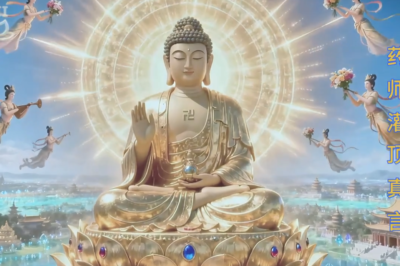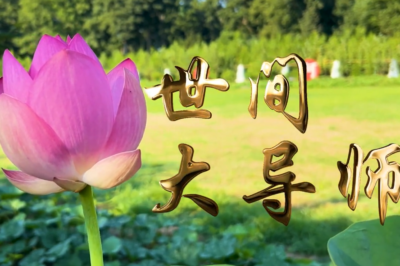Real Stories

[dzs_videogallery id="realstories02" start_item="16"] It was an ordinary d...

[dzs_videogallery id="realstories02" start_item="15"] After Fang's family ...

<!–– --> [dzs_videogallery id="realstories02" start_item="11"] Th...

I am a man who smoked and drank for 26 years. I resolved to ...

[dzs_videogallery id="realstories02" start_item="13"] Most people are awar...

[dzs_videogallery id="realstories02" start_item="12"] I started drinki...
Master Nenghai
Published:2014/12/24 Venerable Masters Views:1330
 Master Nenghai (1886–1967), orphaned early in life, relied on his elder sister for support. He studied at a private academy and became well-versed in Confucian classics. During the late Qing dynasty, amidst national turmoil, Master Nenghai resolved to join the military. In 1905, he entered the Sichuan Military Academy and graduated with honors in 1907. Later, by chance, he heard Dharma teachings by Master Foyuan at Tianbao Temple, which deeply resonated with him.
Master Nenghai (1886–1967), orphaned early in life, relied on his elder sister for support. He studied at a private academy and became well-versed in Confucian classics. During the late Qing dynasty, amidst national turmoil, Master Nenghai resolved to join the military. In 1905, he entered the Sichuan Military Academy and graduated with honors in 1907. Later, by chance, he heard Dharma teachings by Master Foyuan at Tianbao Temple, which deeply resonated with him.
He began diligently studying Buddhist scriptures, regarding them as treasures, and decided to dedicate his life to Buddhism, aiming to spread its teachings for the benefit of all beings. He founded the Shaocheng Buddhist Society in Chengdu, inviting monks and lay practitioners to deliver lectures there. While attending lectures himself, he occasionally taught the Dharma to others. At the time, he lived at Wenshu Monastery and often expressed his desire to become a monk, inspired by the sound of temple bells. However, due to his sister’s insistence that he have descendants first, he delayed ordination. In 1924, at age 39, after having a son, he resolutely left his family, becoming a monk under Master Foyuan. He received the monastic name Nenghai and took full ordination under Abbot Guanyi of Baoguang Monastery. Later, both his wives also ordained at Aidao Hall.
From then on, Master Nenghai delved deeply into Buddhist scriptures, seeking profound meaning. Upon learning of the excellence of Tibetan Buddhism, he resolved to study in Tibet. Upon reaching Lhasa, he devoted himself to Kangsar Rinpoche, offering great respect and diligently studying under him. Kangsar Lama, recognizing Master Nenghai’s exceptional dedication, taught him the essentials of esoteric teachings. Within a few years, Master Nenghai mastered what typically takes decades to learn, excelling both in study and practice. Moreover, he strictly upheld precepts and practiced according to the teachings, earning Kangsar Lama’s high praise.
After completing his studies, Master Nenghai started to spread Tibetan Buddhist teachings in the Chinese-speaking world. He focused his life’s efforts on two main areas: establishing monasteries to promote the Gelugpa tradition of Tibetan Buddhism and translating Buddhist texts. He founded several institutions in Sichuan, such as Jinci Temple, Jixiang Temple, Yunwu Temple, Cisheng Hermitage, and the Vajra Dharma Center in Chongqing, greatly influencing the spread of Tibetan Buddhism in China. Additionally, he transported a large number of Tibetan Buddhist texts to China, many of which were previously unavailable in Chinese. At Jinci Temple, he established a translation institute to translate texts between Chinese and Tibetan and aimed to translate them into other languages to share Buddhism globally. His translation efforts resulted in over 50 classical texts and the publication of over 80 treatises.
In 1940, the 32nd American president Roosevelt sent a personally signed letter through the U.S. Consulate in Chengdu, inviting Master Nenghai to lecture in America. The letter praised his moral and spiritual contributions, but Master Nenghai declined, stating, “Others may go in the future.”
In the late 1930s, Master Nenghai visited Mount Wutai and lectured at Wenshu Temple. It is said that during his lecture, an image of Manjushri riding a red lion appeared, bringing great joy to the audience. In 1953, feeling that Mount Wutai, as Manjushri’s sacred site, was an ideal place for his later years, he led a group of monks there and established the Auspicious Vinaya Institute at Qingliang Bridge.
In the summer of 1966, at the start of the Cultural Revolution, Master Nenghai resided in Shan Cai Cave on Mount Wutai. He was persecuted by the Red Guards, labeled as a “black gang” leader, and subjected to severe humiliation and torture. Despite this, he remained composed, expressing deep compassion for sentient beings caught in karmic cycles. In late 1966, the Red Guards disbanded all monasteries and ordered monks to return to their hometowns. Feeling his worldly ties had ended, Master Nenghai asked those around him whether he should leave, but none responded. On December 31, he attended a political study session as usual and showed no signs of illness. Late that night, he informed a monk, “Please take a leave of absence for me tomorrow, saying I am unwell.” On January 1, 1967, he was found in seated meditation, having passed away peacefully. He was 81 years old with 43 years in monastic life, demonstrating complete mastery over life and death.
Throughout his life, Master Nenghai lived with strict discipline and encouraged his disciples to cultivate the Bodhisattva path, endure hardships, and place the welfare of others before their own. He warned against selfishness, which tarnishes the Buddhist name.
Selected and compiled from:
- “Record of the Noble Virtues of Venerable Master Nenghai” by Master Qingding 清定上师《无上大宝海公恩师德行实纪》
- “Recollections of a Great Monk: Master Nenghai” by Master Changzhen, published on Fo Jiao Dao Hang,昌臻法師《記一代高僧能海法師》,佛教导航网
Pre: Master Guoxuan
Next: Vimalakīrti



![[Video] A Monumental Milestone [Video] A Monumental Milestone](https://en.damiok.org/wp-content/uploads/2025/05/20250514lishidefengbei-287x191.png)



![[Dance] Enlightenment of Rice Transplanting [Dance] Enlightenment of Rice Transplanting](https://en.damiok.org/wp-content/uploads/2025/08/20250808chayangji-400x266.png)
![[Dance] Verse of Auspiciousness [Dance] Verse of Auspiciousness](https://en.damiok.org/wp-content/uploads/2025/08/20250808yuanjixiang-400x266.png)







